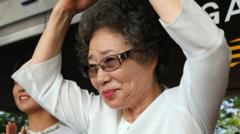As students and young workers increasingly turn to cafes for study spaces, establishments in South Korea, particularly Starbucks, are instituting guidelines to manage prolonged occupancy while still catering to those seeking a comfortable environment.
South Korean Cafes Balance Studying Culture with Customer Comfort

South Korean Cafes Balance Studying Culture with Customer Comfort
Cafes in South Korea are grappling with an influx of long-term patrons often referred to as Cagongjok, leading to shifts in policies to maintain a welcoming atmosphere for all customers.
In the vibrant Gangnam area of Seoul, the buzz of conversation and the aroma of coffee blend with the focused silence of students and young professionals engrossed in their laptops. Yet, this serene scene often brings with it challenges for café owners, particularly those dealing with the rising trend of "Cagongjok"—young patrons who occupy tables for extended hours to study or work.
Hyun Sung-joo, who runs a café in the affluent district of Daechi, has noticed significant changes in customer habits. While he welcomes the influx of dedicated students, he recently faced a situation that exemplified the issue: one individual set up an entire workstation with two laptops and a six-port power strip, occupying a spot for most of the day. "I had to block off the power outlets," he shared, noting the high rental costs in the area make it tough for cafes to survive when tables are monopolized.
This cultural phenomenon of Cagongjok is particularly prevalent in South Korea, where coffee shops frequently serve as informal study halls. Unlike cafés in Western countries, where socializing often reigns, South Korean cafes are transformed by the quiet diligence of students preparing for exams or professionals crafting presentations. In response to numerous reports of customers creating elaborate study stations—with some even leaving their belongings unattended—Starbucks Korea recently introduced new guidelines aimed at addressing what they term "extreme cases" without forcibly asking patrons to vacate.
The atmosphere at many outlets, however, remains conducive to studying. A Thursday evening at a bustling Starbucks in Gangnam featured customers engrossed in their work, including an 18-year-old preparing for her university entrance exams who reported arriving at 11 a.m. and staying until closing time, often leaving her items while stepping out to eat.
Public reaction to Starbucks' newly implemented policy has revealed a mix of support and criticism. Many regular visitors who seek a space for conversation rather than quiet study view the changes as a necessary adjustment to maintain comfort and availability. Still, others worry about stricter rules, believing they disrupt the inclusive community feel the chain previously fostered.
Interestingly, this issue has sparked wider discussions within South Korean society regarding the needs and mental wellness of students. Yu-jin Mo, 29, articulates a powerful sentiment; she frequents cafes feeling safer and more grounded than in potentially isolating study environments like libraries. Professor Choi Ra-young of Ansan University credits this trend to the competitive pressures in modern South Korean life, suggesting that an increased focus on creating accommodating public spaces might provide a solution that satisfies both dedicated students and casual cafe-goers.
As coffee consumption surges—evidenced by a dramatic increase in establishments throughout the country—the ongoing challenge for café owners will be finding a balance that honors this unique facet of South Korean culture without compromising the comfort of all customers.



















